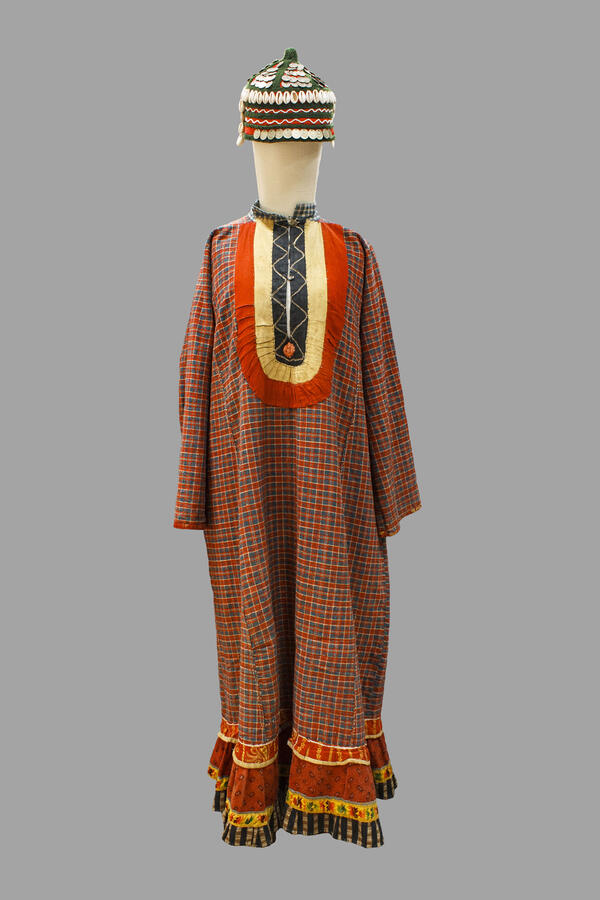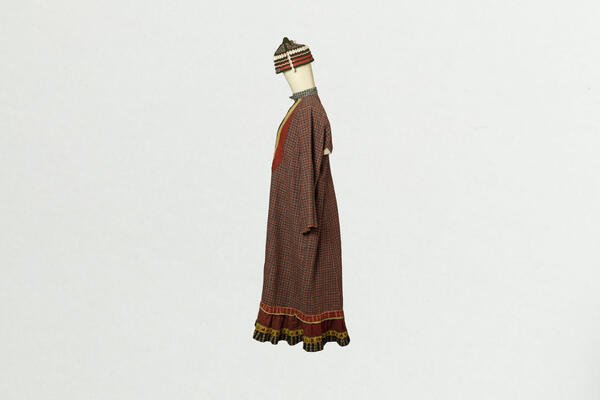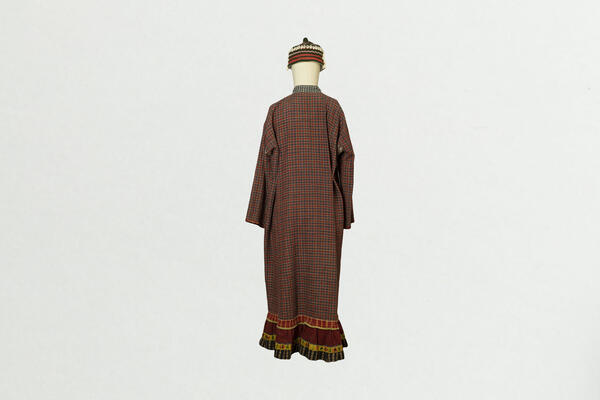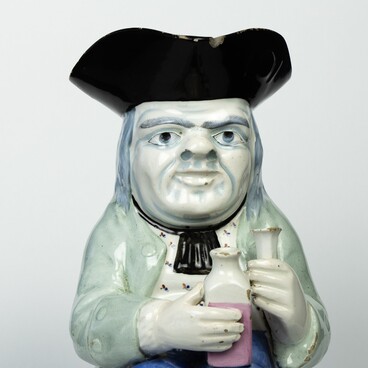The young Besermyan woman’s dress from the collection of the Glazov Museum of Local Lore was worn in the northern regions of Udmurtia in the second half of the 19th — early 20th century. The Besermyan are a small-numbered Finno-Ugric people of Russia that belongs to the South Udmurt ethnic group. They lived for a long time on the territory of Volga Bulgaria, where part of the group converted to Islam and stopped identifying themselves with the Udmurts.
The ethnonym “Besermyan” probably was derived from the word “Muslims”. After the fall of Volga Bulgaria, the Besermyan relocated to the Cheptsa River basin of the Vyatka region. The Besermyan profess Orthodox Christianity, but elements of Islam and paganism can be traced in their traditions.
Traditional dresses for Besermyan girls, teenagers, maidens and married women differed in three aspects: the number of pieces, the headdress and decorative elements. Each age group had several sets of clothes: for everyday wear, festive occasions and rituals.
The girl’s outfit was simple and consisted of a loose straight-cut dress, which was called a deram. Girls were allowed to walk with their hair uncovered and usually braided into one braid.
The girls’ cap was called takya — a domed cap with a knitted “cone”. It was adorned with rows of white cowrie shells, beads and silver coins. A decorated ribbon made of thick fabric with one or two large coins at the end was often sewn to the back of the takya, it was an imitation of a braid. A string of beads with coins was attached to the sides of the cap, they hung loosely on the temples and served as earrings.
The takya was worn for festivities, celebrations and holidays. Before their wedding, young women had to wear a full maiden’s set of clothes, which included knee-length linen trousers, a tunic-like shirt, a robe, an apron, and a headdress — a headscarf or a takya. The festive set consisted of the same elements, but jewelry was added to it. The rules of etiquette forbade girls to show their legs without stockings, footwraps and shoes. The latter were woven from bast or made of leather.
The ethnonym “Besermyan” probably was derived from the word “Muslims”. After the fall of Volga Bulgaria, the Besermyan relocated to the Cheptsa River basin of the Vyatka region. The Besermyan profess Orthodox Christianity, but elements of Islam and paganism can be traced in their traditions.
Traditional dresses for Besermyan girls, teenagers, maidens and married women differed in three aspects: the number of pieces, the headdress and decorative elements. Each age group had several sets of clothes: for everyday wear, festive occasions and rituals.
The girl’s outfit was simple and consisted of a loose straight-cut dress, which was called a deram. Girls were allowed to walk with their hair uncovered and usually braided into one braid.
The girls’ cap was called takya — a domed cap with a knitted “cone”. It was adorned with rows of white cowrie shells, beads and silver coins. A decorated ribbon made of thick fabric with one or two large coins at the end was often sewn to the back of the takya, it was an imitation of a braid. A string of beads with coins was attached to the sides of the cap, they hung loosely on the temples and served as earrings.
The takya was worn for festivities, celebrations and holidays. Before their wedding, young women had to wear a full maiden’s set of clothes, which included knee-length linen trousers, a tunic-like shirt, a robe, an apron, and a headdress — a headscarf or a takya. The festive set consisted of the same elements, but jewelry was added to it. The rules of etiquette forbade girls to show their legs without stockings, footwraps and shoes. The latter were woven from bast or made of leather.





